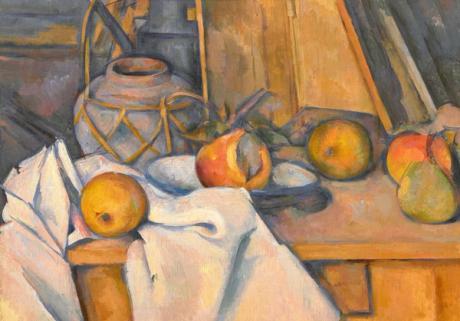
Christie’s has helped broker a restitution settlement between the heirs of the pre-eminent Jewish dealer Jacob Goldschmidt and a Swiss museum to enable the sale of a painting by Paul Cézanne in New York next month, estimated at between $35m and $55m.The canvas, Fruits et pot de gingembre (fruit and pot of ginger, around 1890-93), is one of three paintings by Cézanne being sold by the Museum Langmatt in Baden, Switzerland, which houses the Impressionist art collection of Sidney and Jenny Brown. The Brown family’s electrical engineering company, Brown, Boveri & Cie, operated in Nazi Germany and used thousands of forced labourers including concentration camp prisoners.Considered a last resort to save the museum after alternative efforts to raise funds to keep the Langmatt Foundation afloat failed, the sale has nonetheless prompted outcry. Unusually, if Fruits et pot de gingembre fetches the target amount of around $44.4m, then the remaining two paintings will be withdrawn from the auction on 9 November.Goldschmidt, who ran a gallery in Frankfurt, jointly acquired the work in 1929 with the Lucerne-based L’Art Moderne, an affiliate of the Bernheim-Jeune gallery in Paris. Goldschmidt faced increasingly hostile measures after the Nazis took power in January 1933 and, in November that year, sold Fruits et pot de gingembre under duress to Sidney Brown via L’Art Moderne. Goldschmidt, who emigrated in 1936, was excluded from his profession as a dealer in 1934.These aspects of the painting’s past came to light during last-minute investigations undertaken by Christie’s specialists in recent weeks, and led to a settlement being sought. In a statement, Christie’s says that during “rigorous pre-sale restitution research”, Christie’s and the Foundation Langmatt “determined that the provenance of […] Fruits et pot de gingembre […] should be considered further to address its ownership history”. Together, Christie’s and the Foundation Langmatt ”identified and reached out” to Goldschmidt’s heirs “to understand the circumstances of the 1933 sale of the painting by M. Galerie Goldschmidt & Co”.The statement notes how Christie’s, the Foundation Langmatt and Goldschmidt’s heirs have “worked co-operatively together to find an amicable resolution”. The Cézanne now comes to the market following a settlement agreement, which “fully resolves and settles any dispute over the ownership of the work, and clear title will pass to the successful bidder at auction”.Ewald Volhard, a partner in the German law firm Wantuch Thole Volhard, which represented Goldschmidt’s heirs in the settlement, says “a fair and just solution” was negotiated with the owner, “in accordance with the Washington Principles”. He adds: “The heirs of Jacob Goldschmidt have expressed their gratitude for the solution reached. They are pleased that their grandfather is also remembered on this occasion. Jacob Goldschmidt was one of the very great art dealers of the early 20th century.”


























